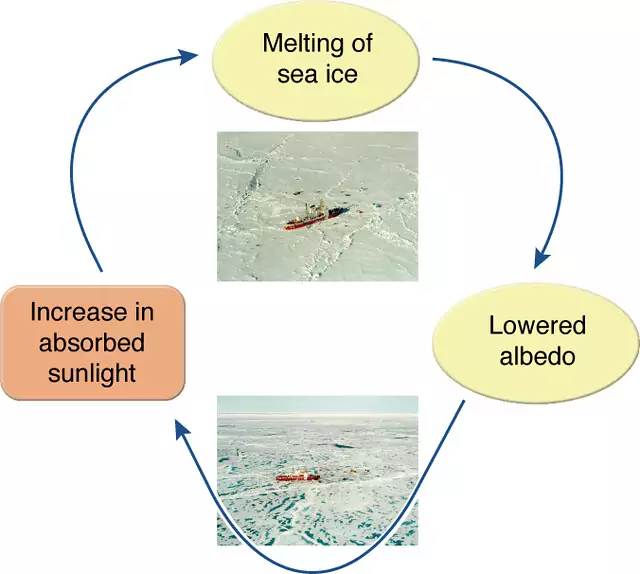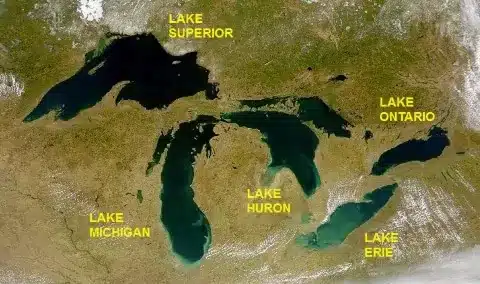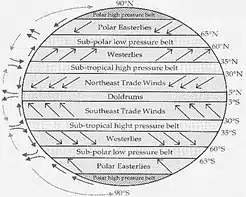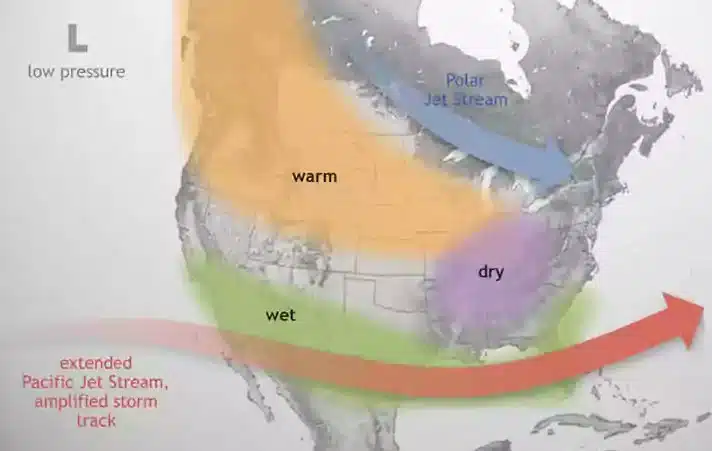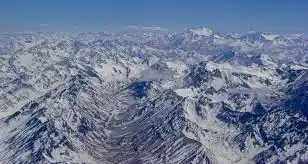Earthquake Waves
- The abrupt release of energy along a fault (sharp break in the crustal layer) causes earthquake waves.
- Mohorovices used earthquake waves for the first time in 1909 to know about earth’s interior.
TYPES OF EARTHQUAKE WAVES
Based on the medium they travel in, earthquake waves can be classified under two categories:
- Body waves
- Surface waves
Body waves are those waves that travel through the earth. They originate at the epicentre of the earthquake and travel through the earth at amazing speeds. There are two types of body waves, namely,
- P waves
- S waves
Surface waves are those waves that travel on the surface of the earth. The destruction caused by earthquakes is primarily done by these waves.
P WAVES
- P waves travel fastest and are the first to arrive from the earthquake.
- These are also known as Primary Waves.
- They are longitudinal waves like sound waves in which the movement of the particles is in the direction of the propagation of waves.
- Their average velocity is 8 km per second which is higher than any other waves.
- P waves can travel through all the mediums including solid, liquids, and gases.
S WAVES
- These are known as Secondary waves and are transverse like light waves.
- The movement of the particles is at right angles to the direction of the waves.
- Their average velocity is 4 km per second.
- They can travel through solids only and disappear in liquids.
L WAVES
- These are also known as Long waves.
- They travel along the surface of the earth and are often referred to as Surface waves.
- L waves can travel through all the mediums (solids, liquids and gases), but their average velocity is just 3 km per second.
- P and S waves are of a class called body waves because they travel through the solid body of the earth. Body waves are distinguished from surface waves, which move along the free upper crust of the earth.
- Surface waves are of two types; they travel more or less together, but with different motions.
- One type consists of Rayleigh waves, named after the English physicist, Lord Rayleigh. They can be visualized as water waves traveling across the surface of a still pond after a pebble has been tossed into the water.
- The second type of surface waves is the Love wave, named after the physicist A.E.H. Love Motion in the Love wave is entirely horizontal, at right angles to the direction of wave motion.
Propagation of Earthquake and Shadow Zone
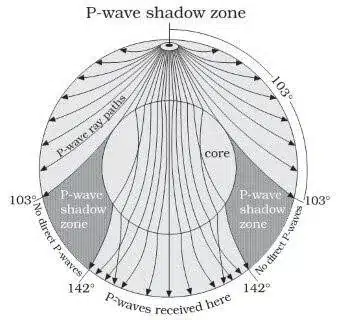
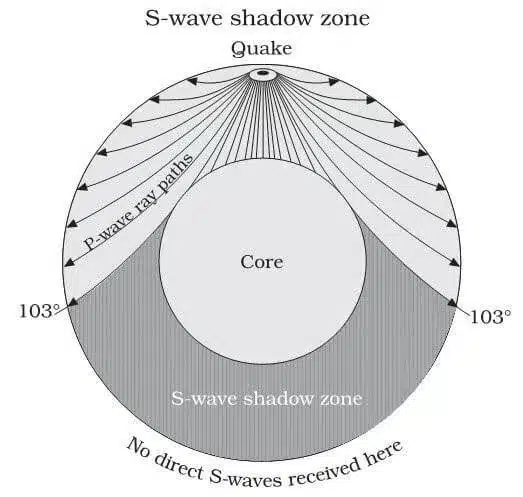
- P waves vibrate parallel to the direction of the wave. This exerts pressure on the material in the direction of the propagation. As a result, it creates density differences in the material leading to stretching and squeezing of the material.
- Other three waves vibrate perpendicular to the direction of propagation. The direction of vibrations of S waves is perpendicular to the wave direction in the vertical plane. Hence, they create troughs and crests in the material through which they pass (Surface waves are considered to be the most damaging waves)
- All the three P, S and L waves are recorded near the focus of the earthquake. They follow a curved path in the interior of the earth which proves that the density increases inside the earth.
- P and S waves are recorded along the surface up to a distance of 11,000 km from the focus of the earthquake. Their velocity also increases with the increase in depth. But this process continues only up to a depth of 2,900 km. Beyond this depth, S waves disappear and P waves travel with reduced velocity. This process shows that the core of the earth behaves like liquids while mantle up to a depth of 2,900 km behaves like solids.
- On reaching the core, S waves disappear and P waves are refracted as a result of which there are no waves for a distance of 5,000 km beyond the 11,000 km mark. This area is known as the Shadow Zone. Normally, the shadow zone is found between 103° and 143° distant from the focus of the earthquake.
- The presence of the shadow zone on the surface of the earth shows that the earth’s core is composed of heavy materials like nickel and iron.
- The velocity of P and S waves increases with the increase in depth up to 2900 km i.e. the core-mantle boundary. At this stage there is a sudden fall in the velocity of P waves and the S waves disappear altogether the velocity of P waves again rises till the centre of the earth is reached.
Also refer :




